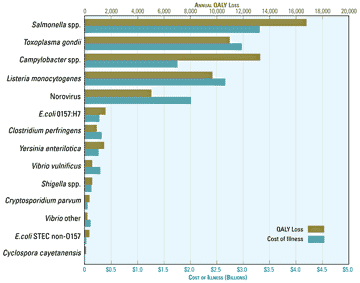
With the new FSMA legislation coming into law, regulatory agencies and processors alike are trying to develop risk-prioritization models to identify high-risk foods and facilities to make informed resource allocations. The starting point for implementing risk-based food safety systems is being able to identify where the greatest food safety problems lie, says Michael Batz, co-author of the report, Managing the Risks: The 10 Pathogen-Food Combinations With the Greatest Burden on Public Health, from the Emerging Pathogens Institute (EPI) at the
To provide a means of comparing the risks posed by different pathogen-food combinations in the
The report, which was supported by a grant from the Robert Wood Johnson Foundation, includes the following key findings and recommendations for food safety officials:
- Salmonella is the leading disease-causing bug overall, causing more than $3 billion in disease burden annually. In addition to poultry, Salmonella-contaminated produce, eggs and multi-ingredient foods all rank in the Top 10. The report recommends the FDA and USDA develop a joint Salmonella initiative that coordinates efforts in a number of foods.
- Poultry contaminated with Camplylobacter bacteria sickens more than 600,000 Americans at a cost of $1.3 billion per year.
- Four combinations in the Top 10-Listeria in deli meats and soft cheeses, and Toxoplasma in pork and beef-pose serious risks to pregnant women and developing fetuses.
- Norovirus is the most common foodborne pathogen and is largely associated with multi-ingredient items that can become contaminated, often by service-industry workers who handle food.
- The report lists E. coli O157:H7 as the sixth pathogen in overall burden, with the majority due to contaminated beef and produce.

